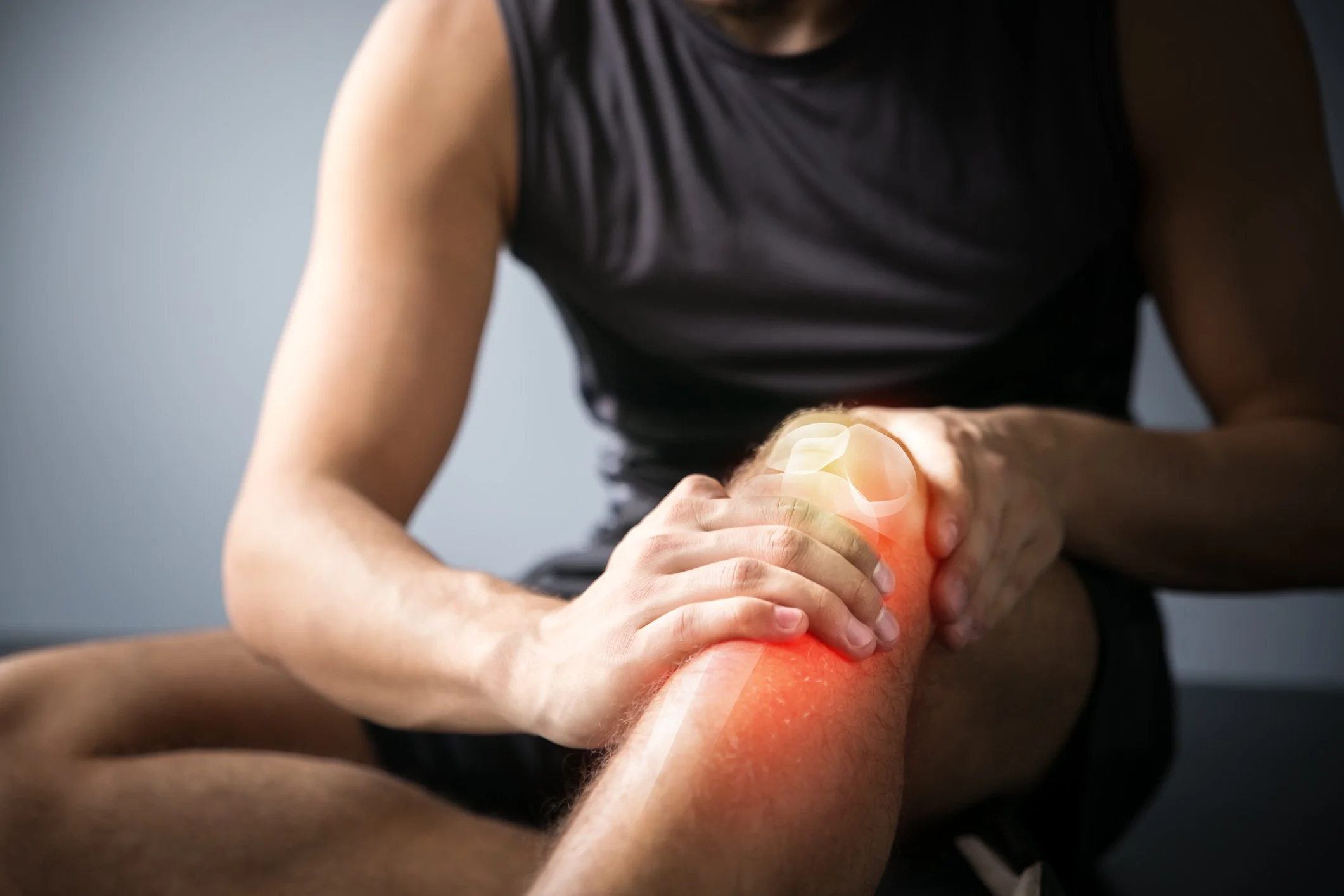Knee Injury and Chiropractic Care: A Non-Surgical Path to Recovery
Knee injuries are one of the most common musculoskeletal problems people face, affecting athletes, active adults, and even retirees who simply want to enjoy daily movement without pain. From meniscus tears to arthritis flare-ups, knee pain can limit mobility, independence, and quality of life. While surgery is sometimes necessary, you might be looking for alternatives that don’t involve long recovery times, invasive procedures, or the risks of medication dependency. This is where chiropractic knee pain treatment, non-surgical knee injury care, or knee stabilization chiropractic therapy come into play.
To understand knee injuries and treatments, I think it’s important to address the term biomechanical dysfunction.
Biomechanical dysfunction is defined as a condition where faulty movement patterns or poor alignment in the body can lead to increased stress on joints and tissues, which can cause pain, injury and impaired function.
By addressing misalignments, muscle imbalances, and biomechanical dysfunctions, chiropractic care offers an effective and holistic solution to knee pain.
Understanding Common Knee Injuries
Before exploring chiropractic solutions, it’s helpful to understand what kinds of knee problems patients typically face:
Meniscus tears: Occur when the meniscus, a piece of cartilage that acts as a shock absorber for the knee, is damaged. This can happen due to sports, twisting injuries, or degeneration as we age. We have two menisci in each knee, one on the medial side and one on the lateral side.
Ligament Injuries (ACL, PLL, MCL, LCL): Sudden stops, pivots, or impacts can overstretch or tear these stabilizing ligaments. ACL’s are the most important in stability and require months of rehabilitation.
Patellofemoral Pain Syndrome: Sometimes called “runner’s knee,” this involves pain around or behind the kneecap. I am all too familiar with this as I am an avid runner myself.
Osteoarthritis: Wear-and-tear arthritis in the knee joint can lead to stiffness, swelling, and chronic discomfort.
Tendonitis or Overuse Injuries: Repetitive stress, poor posture, or improper movement patterns can inflame the tendons around the knee.
How Chiropractic Knee Pain Treatment Works
Chiropractic knee pain treatment is centered around restoring balance and alignment to the body. The knee doesn’t exist in isolation—it’s influenced by the feet, hips, pelvis, and spine. Chiropractors harp on the saying, “everything is connected” and when one part of this chain is out of alignment, it puts added strain on the knee joint. We address these issues through several techniques:
1. Joint Adjustments
Gentle adjustments to the knee or surrounding joints (hips, ankles, or pelvis) can improve alignment, reduce abnormal stress, and promote healing. These adjustments often provide immediate relief from stiffness and discomfort.
2. Soft Tissue Therapy
Chiropractors may use hands-on techniques, instrument-assisted soft tissue manipulation (IASTM), or myofascial release to reduce tension in the muscles, tendons, and ligaments that support the knee. Other options include myofascial release technique which can be done in a chiropractic office, or more effectively, a certified massage therapist.
3. Corrective Exercises
Targeted strengthening and stretching exercises help restore balance to the muscles around the knee. For example, weak quadriceps or glutes often contribute to knee instability.
4. Biomechanical Assessment
Chiropractors look at how you walk, run, or move. Poor gait mechanics, foot problems, or hip misalignments can all overload the knee joint. Correcting these issues reduces long-term wear and tear.
A few points to make…
While I wholeheartedly believe in the benefits of chiropractic adjustments, I also recognize the significance of soft tissue therapy. Knee pain often doesn’t manifest spontaneously, especially when it’s a long-standing issue. I’m certified in IASTM (also known as muscle scraping), and I’ve found that combining this therapy with chiropractic adjustments yields better results and shorter recovery times. For corrective exercises, I always recommend consulting a physical therapist. Additionally, there are numerous videos on YouTube that can help you get started with basic strengthening exercises. Lastly, if you’re a runner seeking immediate information on biomechanical assessment, consider visiting a local running store. The store owners are usually experienced runners who can provide valuable advice on your gait and recommend the appropriate shoes for you.
The Benefits of Non-Surgical Knee Injury Care
Choosing non-surgical knee injury care offers several advantages:
Faster Recovery: Unlike surgery, which may require weeks or months of downtime, chiropractic treatments often allow patients to stay active during their recovery.
Lower Risk: Avoiding invasive procedures means no risk of surgical complications or dependence on strong pain medications.
Whole-Body Focus: Chiropractors treat not just the knee, but the contributing factors in other joints and muscles.
Cost-Effective: Non-surgical care is often more affordable compared to surgical interventions and lengthy rehabilitation programs.
One of the advantages of having a private practice like mine is the opportunity to provide more personalized care. Over the years, I’ve come across excellent clinics and physicians who dedicate time to treating my patients with exceptional care. The specialists I’ve encountered include neurologists, radiologists, naturopaths, massage therapists, and even attorneys, among others, who have all contributed to my patients’ well-being.
Knee Stabilization Chiropractic Therapy
A cornerstone of chiropractic care for knee injuries is knee stabilization chiropractic therapy. This approach focuses on strengthening and stabilizing the knee joint to prevent re-injury and improve long-term function.
Key Components of Knee Stabilization Therapy:
Muscle Strengthening: Targeting the quadriceps, hamstrings, calves, and glutes to better support the knee.
Ie. Performing a basic squat, or a more advanced Bulgarian split squats.
Balance and Proprioception Training: Exercises that retrain your body to sense joint position and movement, reducing the risk of falls or missteps.
Ie. Standing on one leg for 30secs, then switch legs, OR walking backwards in a straight line.
Postural Correction: Proper alignment of the spine and pelvis ensures the knee isn’t bearing uneven loads.
Supportive Taping or Bracing: Temporary supports may be used to provide added stability while healing. Also known as Kinesiotaping.
By combining manual adjustments with stabilization therapy, chiropractors help patients regain confidence in their movement and prevent the cycle of repeated injuries.
Real-Life Applications: Who Benefits Most?
Chiropractic care for knee injuries isn’t just for athletes. Here are a few groups who may benefit:
Active Adults: Weekend warriors or fitness enthusiasts who experience strains or overuse injuries.
Older Adults: Those struggling with arthritis or mobility challenges who want to avoid invasive surgery.
Post-Injury Patients: Individuals recovering from mild to moderate sprains, strains, or tears.
Workers on Their Feet: Jobs that require standing or lifting often lead to chronic knee stress.
Each of these groups can find tailored solutions through chiropractic care designed to fit their lifestyle and health goals.
What to Expect During Your First Visit
For those new to chiropractic, the first appointment often includes:
Comprehensive Health History & Examination – including details about your injury, activity level, and overall health.
Movement & Gait Analysis – to identify underlying biomechanical issues.
Customized Treatment Plan – incorporating adjustments, therapy, and exercises specific to your needs.
Imaging (if needed) – X-rays or other imaging may be recommended to rule out fractures or severe tears. Patients are referred out to a local radiology clinic for any x-rays, CT Scans, or MRIs. Turn around time is between 2-3 days.
Conclusion
Knee injuries can be frustrating, painful, and limiting, but they don’t have to define your life. In this blog, I included “Non-surgical path to recovery” because knee injuries often come with the perception of needing surgery. Meniscal tears are more common due to increased participation in youth sports. However, current research suggests that surgical procedures like arthroscopic partial meniscectomy are one of the most performed surgeries for meniscal tears, but the outcomes are no better than placebo surgery. Knee injuries involving the meniscus have been linked to accelerated osteoarthritis. There seems to be a shift in the medical industry’s mentality, where it’s now ideal to preserve the meniscus as much as possible instead of re-sectioning for better outcomes. Here is the link: Meniscal Tears: Current Understanding, Diagnosis, and Management
And as luck would have it, chiropractic aims to treat the root cause of pain, restores mobility, and preserve your body as long as possible so you can keep moving. If you’re searching for an alternative to surgery, chiropractic solutions like chiropractic knee pain treatment, non-surgical knee injury care, and knee stabilization chiropractic therapy may be the key to getting you back on your feet.
Book Online for an appointment if you are ready to get started.




